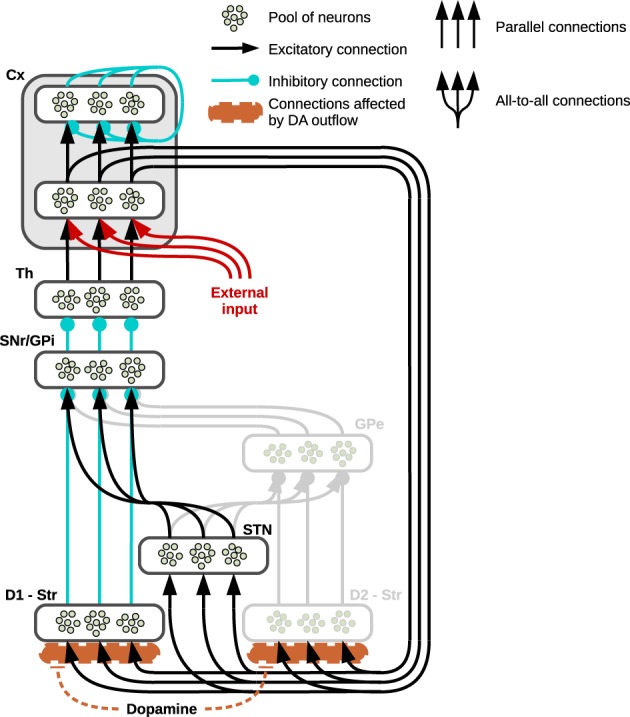Figure 1.

Prototypical striatocortical loop used in simulations. The neural structure shows three “channels” to exemplify its connectivity: the pools of neurons belonging to different neural subregions of the basal ganglia are connected either via localized (parallel) or diffuse (all to all) connections. The cortex (Cx) is divided into two neural layers, the inner layer is part of the striatocortical loop, receiving its incoming signal from the thalamus (Th) and propagating it to the striatum (Str) and the sub-thalamic nucleus (STN) whilst the external layer functions as the output of the system. In the single loop test showing the effects generated by arbitrary DA outflows, an external input reaches the inner layer of the cortex (here represented in red). The striatum is divided into two areas: the direct pathway involves the area of striatum characterized by the presence of D1 receptors (D1—Str) which is connected either to the Substantia Nigra Pars Reticulata (SNr) or the internal Globus Pallidus (GPi). The indirect pathway (represented in gray because it is not part of the present simulations) involves the part of striatum mainly characterized by D2 (D2—Str) and the external Globus Pallidus (GPe).
